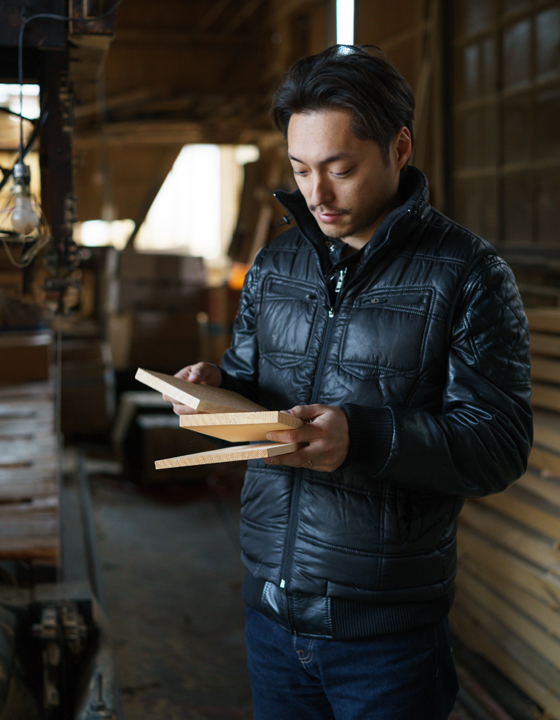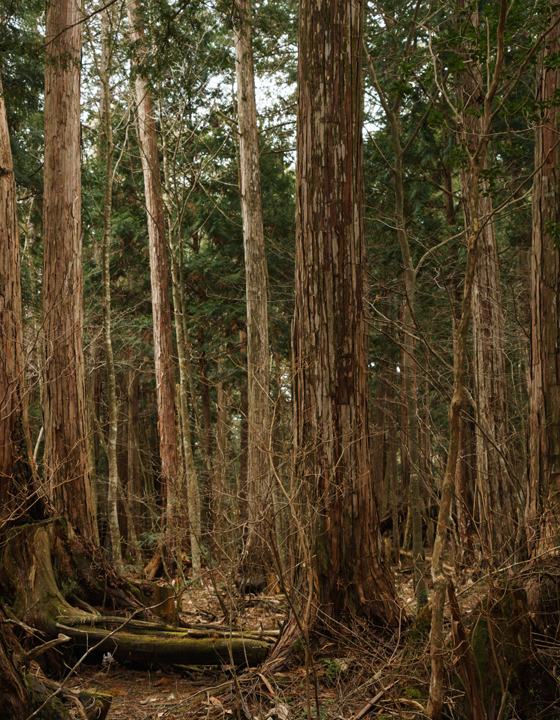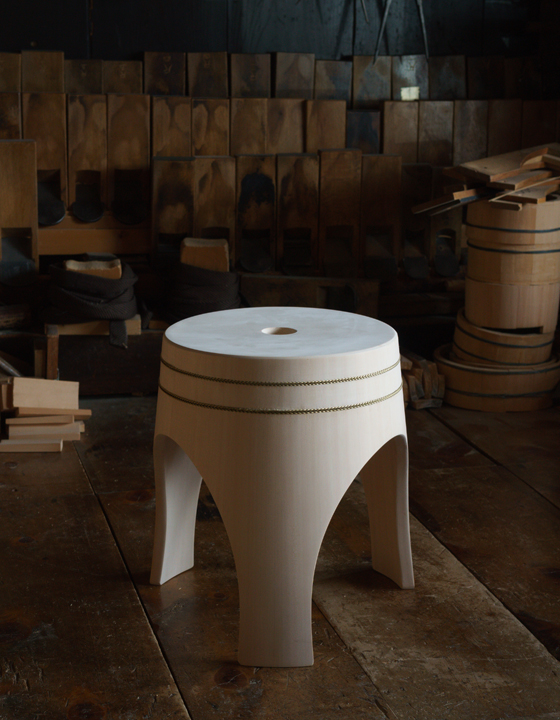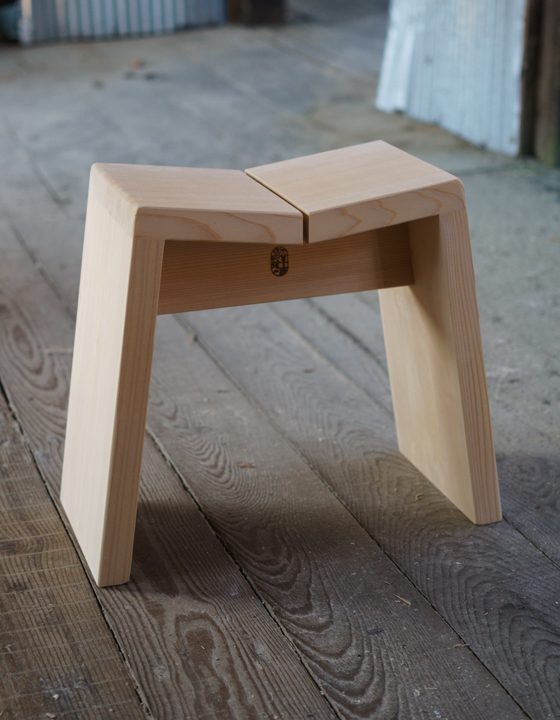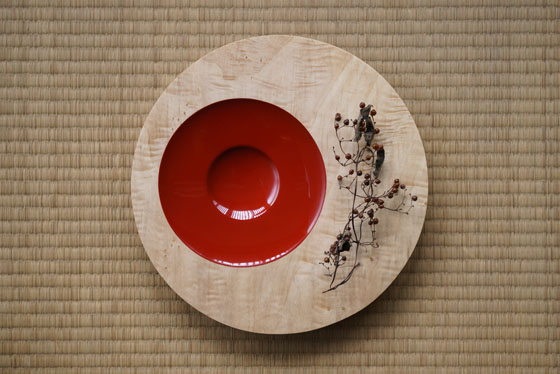Japan Stories: Tree to Green
Scritto da 25portraits
Berlin, Germania
25.07.17
The last installment of Japan Stories looks at Tree to Green, a company based in Tokyo and Kiso that designs modern lifestyle products made from the famous Kiso hinoki cypress trees.
Takanori Kosegi in his parents’ workshop with some wood samples
Tree to Green is a company based in Tokyo and Kiso that designs and distributes modern bath and kitchen products made from the famous Kiso hinoki cypress trees. The line “Kiso Lifestyle Labo” features many hinoki products for Japanese bathing culture such as bath stools, barrels, mats and wooden aromatics. Their “Wood-EN” line consists of tableware made by Rokuro craftsmen.
Tree to Green also specialises in concepts, designing and manufacturing contract furniture for homes and public buildings – all made of wood sourced from the Kiso Valley.
Takanori Kosegi talks about the start of his company, the Kiso hinoki cypress and how he'd like to change the local woodworking industry.
The Akasawa Natural Recreational Forest with thousands of Hinoki trees (top). Interior view of the light-flooded workshop in Kiso (bottom)
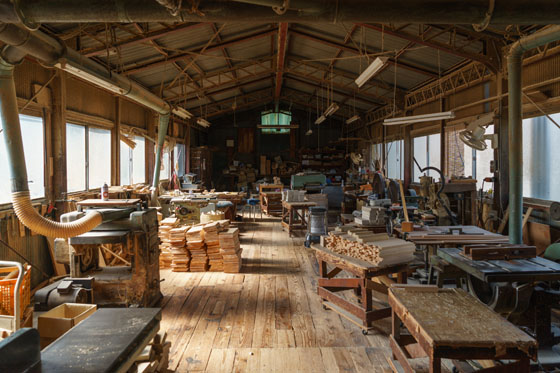
The Akasawa Natural Recreational Forest with thousands of Hinoki trees (top). Interior view of the light-flooded workshop in Kiso (bottom)
× When and how did you discover your passion for wood and woodworking?
I was born in Kiso and raised there as well. I am 34 now. My grandfather founded the factory that we are speaking in now. I also went to highschool in Kiso. Afterwards, I went to the university in Tokyo. Then I started at an IT company following graduation. Also in these days I met the later president of my company Tree to Green. My parents’ factory was not an investment option for him, but he did have the idea to reinforce Japanese forestry.
At that moment, I realised that I should work in my grandfather’s factory to make wooden objects. My father is a manufacturer for wooden goods at this factory. In my childhood I was not interested in his work. It was not very cool. But now I am very happy to do the same thing that my parents have done for a long time. And it’s awesome to have the chance to work with my family.
Our company Tree to Green is all about modern products like furniture, toys and other things. I am very proud of conceptualising a new product, developing its design and selling it to the consumer. I want to keep these kinds of factories running.
When and how did you start Tree to Green?
Mr. Yusuke Aono, the president of Tree to Green, and I met four years ago and we decided to found the company together. Initially, we sold only the same products of my parents’ factory. (…)
But then, we thought we should design and produce our own product line. And we thought about another way to sell it. Therefore, more people joined us and expanded the team.
Our principles are to use only Japanese wood and to preserve traditional Japanese woodworking crafts. Hopefully, the company will be much bigger in 10 or 12 years. Our philosophy is to contribute to reinforced forestry and to preserve traditional craftworks in Japan.
This luxury stool made by an oke (barrel or bucket) maker is from the "Kiso Lifestyle Labo" line (top). An oke maker's typical tools (middle). The temporary Tree to Green workshop is nestled in Kiso's side valley (bottom)
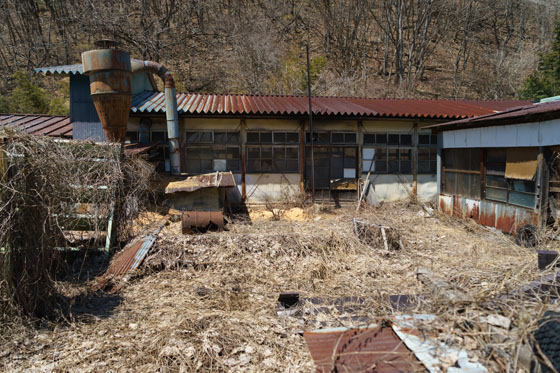
This luxury stool made by an oke (barrel or bucket) maker is from the "Kiso Lifestyle Labo" line (top). An oke maker's typical tools (middle). The temporary Tree to Green workshop is nestled in Kiso's side valley (bottom)
× Please explain how you collaborate with other craftspeople.
Originally, I didn’t know any craftsmen in Kiso, but my parents have this factory, so they introduced me to some of them. We had to find people that were able to adapt to our new product designs. My parents found some proper aspirants for the company. Now I am working with some people who even knew my grandfather or who know my parents, which is very important because shared roots between families or companies are often part of Japanese business relationships.
Many of your products are relatively robust or even rugged rather than delicate.
Originally the products from this region are rather masculine, but we also want to make things more feminine. So we tried to give our drafts something soft and round. We try to anticipate what women like to also suit their demands.
Most of your products are made from hinoki cypress.
In the Kiso area, there are many hinoki cypress trees and also some sugi trees (Japanese red-cedar). That is the reason why almost the whole portfolio is made of hinoki wood from this region. Hinoki wood is water resistant; it has a nice odour, is antibacterial and looks very soft. In conclusion, it is very Japanese and the most notable wood from the Kiso area.
For centuries, Hinoki and sometimes sawara (sawara cypress) have been the preferred woods for typical bathing stools. Now we use it in our kitchen and bath products as well. One of our products only emits the hinoki odour as a room fragrance. We are also creating a hinoki crib, since the smell can help calm babies. We try to make surprising products with a large variety of goods. The huge Kiso Valley is full of hinoki trees. It is cold here in winter and hot in summer. That’s the reason for trees’ slow growth and for better quality, densely textured wood.
Hinoki is the most popular wood for Japanese bath stools. This modern version is part of Tree to Green’s "Kiso Lifestyle Labo" line (top). An oke (barrel) craftsman's workshop located next the main road in Kiso Valley (bottom)

Hinoki is the most popular wood for Japanese bath stools. This modern version is part of Tree to Green’s "Kiso Lifestyle Labo" line (top). An oke (barrel) craftsman's workshop located next the main road in Kiso Valley (bottom)
× What is the current situation of Japanese woodworking crafts in Kiso?
Forests cover almost seventy percent of Japan’s area. Despite this fact, Japanese people use a lot of imported wood. About 70 per cent of the domestic wood market is imported although there is enough forest even when we would increase the use of wood. The government encourages using domestic wood. The reason why Japan imports wood from abroad is that other countries cut much more as the result of low prices and a stable supply. Here in Japan, stable production has not been achieved until now. I would like to increase the production and intensify forestry. The idea is to have a higher quantity of goods made of Kiso hinoki to have an impact on the Japanese market.
An asymmetrically turned plate with partial urushi lacquering from the "Wood-EN" tableware series
This is an excerpt of the interview with Takanori Kosegi held in April 2017 in Kiso-gun, Nagano.
Photos: Katharina Zettl and Uwe Roettgen
...
About 25portraits
25portraits is a book and documentary project about the inspiring workshops, materials, production processes, products and personalities of 25 craftspeople from all fields of Japanese arts and crafts.

